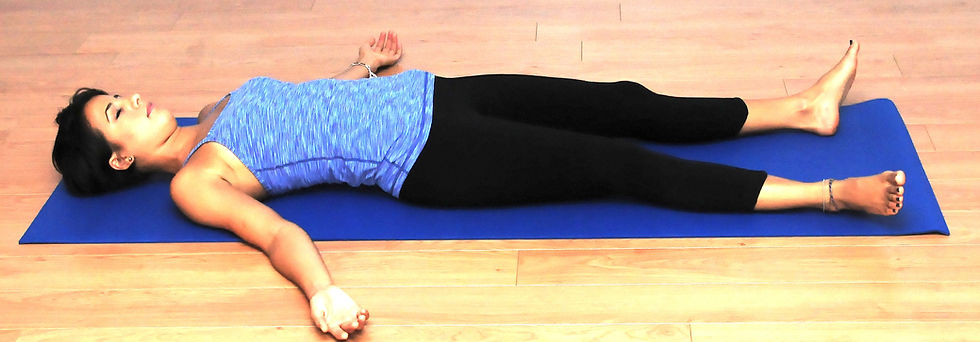
I admit it. I’ve been one of those yoga practitioners who never took the value of Savasana seriously. As much as my teachers touted it as the “most important pose in yoga,” I just couldn’t buy it. Certainly, at the end of a very intense class, I often appreciated those well-earned, precious moments of doing nothing. I happily collapsed into a state of final exhaustion, often falling asleep and hoping that this respite would go on forever!
But Savasana is not about falling asleep. “Most difficult for students,” says Sri K. Pattabhi Jois, “not waking, not sleeping.” Savasana is the time in practice where we are fully aware while remaining in complete surrender.
Should Savāsana always be the ‘final’ pose?
No, it is not confined to being the final pose.
Some traditions, such as Sivananda yoga, intersperse Savasana between their sequences of high intensity postures. Used in this way, the innocuous Savasana provides a physiological, yet powerfully understated value: re-booting the body to restore and rebound from a state of depleted energy.
Savāsana is Corpse Pose
Savasana derives from the Sanskrit term Sava, meaning corpse. It should not be confused with Mrtasana, which uses the Sanskrit word Mrta, meaning death.
In India, the corpse is prepared for an ultimate experience with auspicious alignment. The chest is lifted, and the shoulders and lower ribs are tucked down and back. The hips are gently, internally rotated and the gluteal flesh is lifted up and obliquely toward the back. A mortician told me that he uses a similar technique in his work.
When Savasana is the final asana, it is a resting pose,. It is ideally held for one minute for each 10 minutes of classtime, when time permits. Savasana is sometimes guided with cues, taken from Yoga Nidra.
Blankets, eye pads, and bolsters under the knees are often used. Breath is encouraged to become slow and deepened. In spite of its state of inactivity, alignment instructions are given, following the form similar to Tadasana. The body is kept warm. Remember, in India, upon death, the body is cleaned, wrapped, and set afire. Lying on a cold floor with legs akimbo may be OK for Mrtasana, but not Savasana.
Savasana offers the opportunity to surrender into the pose and find Ishvarapranidhana - the release into supreme love and respect for our connection with things greater than ourselves.
Savasana as energy interval training
Those who run, bike, or do similar HIIT activities are familiar with interval training. By increasing the intensity of an activity for short intervals, followed by a slower period of recovery, cardiovascular resiliency is built. It helps develop vigor and reduces the tendency to collapse into exhaustion or fall asleep when Savasana is offered.
Savasana improves breath, regulates stress hormones, and enables brain activity to restore to a balanced state. The heart rate increases and rapidly slows down. Muscular tension switches from being fully engaged to fully laxed.
Most of us suffer from an unconscious state of chronic, profound exhaustion. Over time, this interval regimen can help to alleviate it.
Why should you practice Savasana?
Do you fall asleep within moments of entering Savasana? Adding short periods of Savasana between the more vigorous, high intensity sequences of asana develops energetic vitality. We learn to remain conscious while in physiological recovery, which greatly improves our energetic stamina.
Although it is clearly not a substitute for getting enough sleep at night, interval Savasana will help!
Do you become agitated in class when the teacher calls for Savasana? Do you crave to continue with more vigorous postures and sequences? Perhaps you are ready for a higher level of physical challenge, or perhaps require a different class or style of practice.
If so, that is wonderful and great to know! Regardless, the value of Savanana remains in every practice.
Savasana should be a welcome respite, an invited bookmark in your practice; not a sacrifice of your time and energy.
Comments